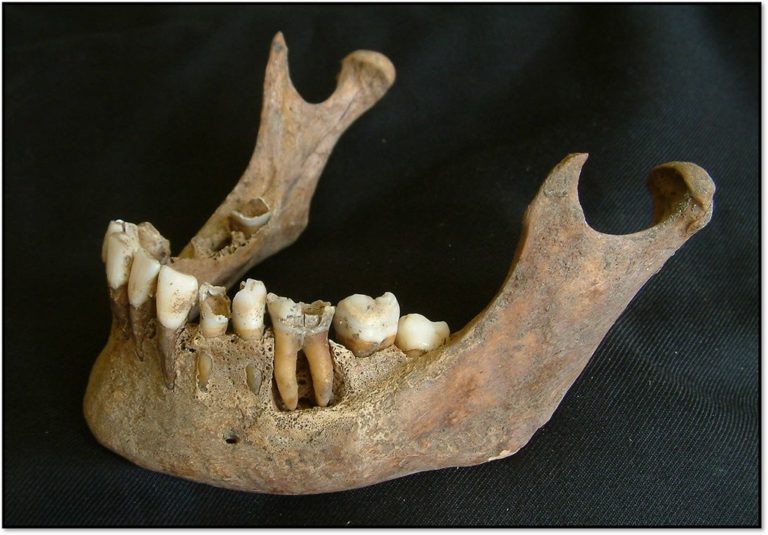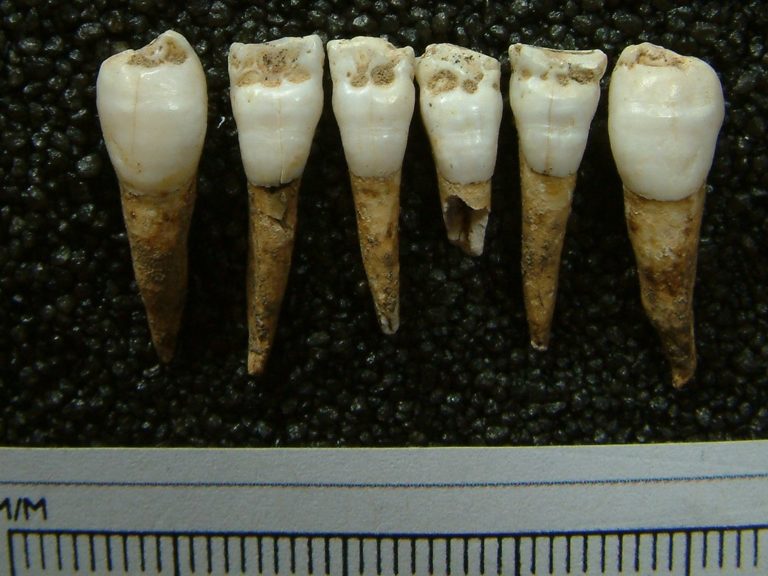Home / History / Archaeology / Forensic Archaeology and Anthropology / Recording Teeth and Dental Pathology

Reach your personal and professional goals
Unlock access to hundreds of expert online courses and degrees from top universities and educators to gain accredited qualifications and professional CV-building certificates.
Join over 18 million learners to launch, switch or build upon your career, all at your own pace, across a wide range of topic areas.


 A mandible showing several dental caries in the molars.
A mandible showing several dental caries in the molars.
 A maxilla with severe dental caries in the molars.
A maxilla with severe dental caries in the molars.
 A periapical lesion, in this instance an abscess, evident from the remodelled edges of the lesion
A periapical lesion, in this instance an abscess, evident from the remodelled edges of the lesion
 Extensive ante-mortem tooth loss in a lower jaw
Extensive ante-mortem tooth loss in a lower jaw







